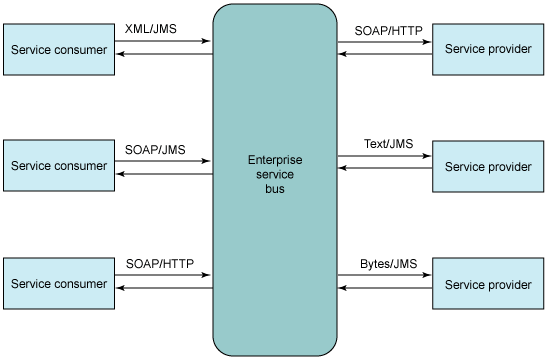User guide
Trello
Petr Jůza
Former user (Deleted)
OpenHub – a modern information superhighway
The OpenHub offers a modern way of connecting IT systems intelligibly, with reasonable costs, and of reacting flexibly to all changing business requirements. OpenHub operates as a go-between for the exchange of information between IT systems, allowing them to communicate between each other by a system of messages and requests. It does this quickly, reliably, and in real time.
OpenHub significantly increases the accessibility of the entire environment and allows certain systems to be shut down temporarily for maintenance purposes without any direct impact on the customer. It simplifies servicing activities thanks to an integrated perspective on the customer profile regardless of which system or technology is administering its data, including external sources. OpenHub also reduces the burden on individual applications, since it obtains each piece of information only once and then automatically distributes it to all necessary recipients regardless of their number. Operations are not burdened by the long response-time of individual systems, and everything is quickly available and up-to-date.
Among other integration platforms OpenHub occupies the position of a light, open product that can be quickly implemented, easily modified, and yet thanks to its embrace of open source technology involves minimum acquisition costs. During its development great emphasis is laid on high performance, security, reliability and problem-free operations.

Types of integration processes
The OpenHub lightweight integration platform is an ESB (Enterprise Service Bus) product. It involves minimal expenses while allowing for the implementation of all regular types of integration processes.
OpenHub supports synchronous and asynchronous methods of communication, distributes information using both the point-to-point and publish-subscribe methods, checks whether the information is up to date, guarantees the delivery of messages and their correct sequence.
It contains resources for ensuring data persistence, data update checks, postponed delivery, automatic correction and recovery from errors, as well as a wide range of resources for administrators enabling them to learn of errors quickly and remedy them.
It makes life easier for developers thanks to its extensive support of automatic tests and use of only regularly available technology such as Spring Framework, etc.
Drivers and adapters
It uses Apache Camel to process messages, which offers all the advantages associated with the large community of developers linked with this product, and the possibility of using the large set of drivers and extension components that exist for Apache Camel. This makes it possible to connect quickly and uniformly to basically any of the technologies used at present and restrict the negative impacts of such differences on the entire environment.

Not only software
Successful integration is not only about technology but a suitably designed architecture. This is why OpenHub is not simply software but contains instructions on how to design processes so that they are simple, effective and problem-free.
OpenHub consists of:
- The core ESB
- Business components
- Documentation
- Suggested models
User guide content:
- Getting started
- Why OpenHub framework?
- How to
- Admin GUI
- OpenHub configuration
- Request/response tracking
- Alerts
- Error handling
- Reference implementation
- Final messages handling
OpenHub features
Open and certified technology.
Generally used standards (JSON, XML, XSLT, WSDL, etc.), no proprietary formats.
Zero licence costs from third parties.
A wide range of drivers, adapters and other components.
High performance and easy scalability.
Integrated security mechanisms.
Resources for ease of management and operations.
Elimination of the technological differences of individual systems.
Clear and intelligible architecture.
Clear implications during changes.